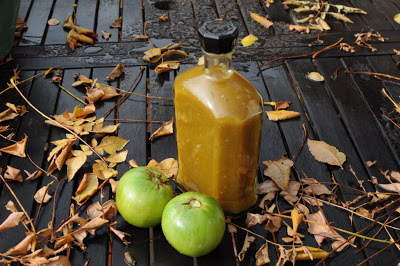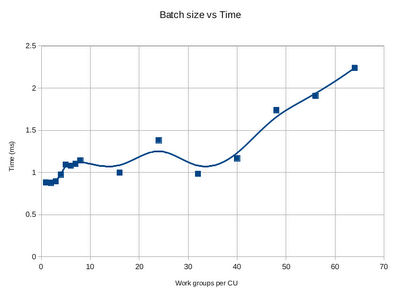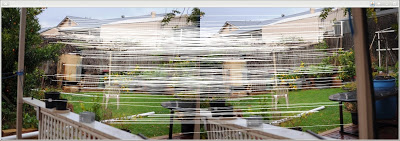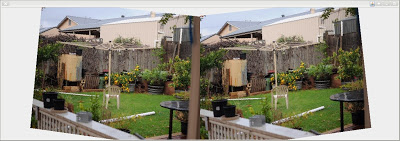About Me
Michael Zucchi
B.E. (Comp. Sys. Eng.)
also known as Zed
to his mates & enemies!
< notzed at gmail >
< fosstodon.org/@notzed >

Slow queues and big maths
After a couple of days poking at my android video player - mostly just to test jjmpeg really - and getting it to mostly work, I thought i'd have a look at some performance tuning. It even does network streaming now.
Fired up the profiler and had a poke ...
Found out it was spending 10% of it's time in the starSlash implementation I was using - I hadn't upgraded the multi-thread player to use the libavutil rescale function and it was still using the java BigInteger class. Easy fix.
And then I checked the queue stuff it's using for sending around asynchronous data. I changed from using the LinkedBlockingQueue to a lighter weight and simpler blocking queue I had tested with the simpler player code. Nearly another 10% cpu time there as well.
So with those small changes my test video went from about 30% cpu time (if i'm reading the cpu usage debug option properly) to well under 10% most of the time. It's only a fairly low-bitrate 656x400@25fps source.
The next biggest thing is the texture loading which can be a bit slow (actually depending on the video size, it's easily the single biggest overhead). I kinda mucked around with that a lot trying to debug `the crash', so that could probably do with a revisit. Right now i'm updating it on the GL thread - but synchronously with the video decoding thread, so any delay is costly (I wasn't sure if decode_video could reference an AVFrame at the next call). From memory doing it this was was quicker than using a shared gl context too. Actually whilst writing this i had a closer look and a bit of a poke - the texture loading is still really slow but i removed more overhead with a few tweaks.
The main problem with the player itself is that it still just vanishes sometimes with a SIGBUS. Android displays nothing about it apart from that the signal was '7', so i guess it's in some native thread. I thought I had gdb running a few weeks ago but i can't seem to get it to run now - although back then it didn't help much anyway. It also doesn't even try to cope well with not being able to keep up with decoding and ugly stuff happens.
Ahh well, if it was done I'd have nothing to do ...
Idle minds ...
So it turns out I have a bit of a break between contracts again - i'm always happy to have extra time off, so there's nothing to complain about there!
I sat down on the weekend and yesterday to play with some socles code, but so far it's been really slow going. I just don't feel like getting too much into it and it's easier just to put it down if i hit a problem; I guess I really do need a bit of a break. I also have tons of crap to do in the back yard, shed, and even around the house as well; but i've been a bit lazy on that front the last year or so, as such I doubt much will happen there.
But yeah, I guess eventually over this break I will get the opencl ransac stuff sorted out in socles, and probably then re-visit jjmpeg to at least check in the code I've already done on the android stuff.
I tried the 12.6 beta catalyst driver yesterday - and thankfully it seems a lot better than 12.4, so far, touch wood, etc. At least it doesn't keep throwing up OUT_OF_HOST_MEM errors after a half a dozen code runs, AND the xinerama twin-screen desktop is back up to decent performance. So after finally getting a GCN GPU I would like to have a play with that and see what I can get out of it. I should probably try and come up with a specific application I want to try to implement and work toward it as well, rather than just poking in random algorithms to socles. The thing is, computers mostly just do what I need them to do (run emacs and a terminal in overlapping windows?), so i'm not particularly driven at this point.
I'm keeping an eye on the ARM stuff; the rhombus tech guys, the open pandora (who knows if i'll ever get the one i ordered - at least an email confirming the order and address once a year would be nice), but with a bunch of beagleboards sitting idle already it doesn't seem much point in me getting another dev board to poke at. Just not enough hours to look at everything that is interesting ...
On the RANSAC code, I pretty much have it done - it's just that messy testing to go. In this version I tried to do most work in the one kernel - I will see if that added complexity makes it slower, or the lower memory demands help it overall. I also tried to parallelise absolutely everything, from coordinate normalisation/result denormalisation to matrix setup. So far i'm getting a strange result in that just the SVD is somewhat slower than just the SVD I had before: although for all intents they are the same design. Once I have it going I will try double arithmetic to see if that generates better results.
Green Tomato Sauce
So for some strange reason I have an abundance of tomatoes at the moment - being June, this is way way out of season. Considering I had tomatoes from October to February as well, it's been a strange year.
The wet is making them split a bit, and together with a lot of bug problems it means they're best picked green before they get eaten or go rotten
I started getting more than I could consume so I made some sauce (not a fan of the green tomato pickles). It's pretty much a plain tomato sauce recipe, but with green or pink tomatoes instead of red. A bit more sugar to compensate (and to compensate for not measuring the salt properly). And since I made it - a shit-load of chillies. The habanero plants are suffering in the cold too and getting a bit of mould problems, so I just grabbed all the chillies I had left on the plants as well. Chucked in a bit of sweet potato I grabbed out of the ground as well since I had it - probably should've used more as i have more of that than I use too.
So, plenty of chillies. I didn't count but it's at least 2-3 cups worth. Plus a handful of all the other green chillies i found in the garden (cayesan and serrano).
It looks much like some fermented green chilli sauce I made (tabasco style), but this has much more of a bite to it. Otherwise it tastes much like home-made tomato sauce, the red kind. While licking the spoon I had enough chilli to give me the hiccups - which means it's pretty hot.
Nearly 3 litres of that should keep me warm over winter and beyond ... I don't even use tomato sauce that often, but this stuff is great with a burnt snag or a boiled sav in a bit of bread. Used sparingly.
Was busy cooking most of the day yesterday, I also made a banana cake (a couple of bananas getting past it that needed using) and another 2l of lime cordial. I used the same recipe as last time but put twice as much lime juice in it- came out much better. More limey and less 'cane sugar'.
PS I used half a bottle of ezy-sauce in the ~2.5kg of the green fruit, so acid shouldn't be a problem.
Oooh, faster
Well, after a hair-pulling week (well I need a haircut, and i'm having a break for a few weeks next week) I'm finally getting somewhere with the HD7970. Not just having it crash the machine on me every test run makes for a much better day.
Some of that time was spent trying to track down crashes inside the clsurf code ... but they were all because I didn't notice that it needed images rounded up to 16 pixels wide ... sigh. Oops. Most of the rest was some barrier issues with my new code - it's been a while and I forgot some of the finer points. Getting it working on a CPU driver was a good help there because if you get the barriers wrong you just get nonsense results.
There was also a lot of time wasted rebooting - not only because of the code that crashes the driver, but because it still decides to start returning CL_OUT_OF_HOST_MEMORY all of a sudden. And I didn't realise till last night I can just log out of/back into X to fix this until it happens again. And time wasted verifying my drivers were ok too - which probably was wasted (and now i have a broken dependency map and catalyst libraries splatted over lib64 to boot). And finally I think I found a bug in the AMD driver as well, it's getting a divide-by-zero signal (which causes the jvm to abort!) when using a local worksize < 64 - this isn't something I normally do, but the occasional algorithm benefits from it. It's not too difficult to work around at least.
AAaaaaaanyway ...
I finally have some RANSAC code working on the new card. And it's a screamer.
I'm getting around 2-3x total performance boost compared to the HD6950 for one run of the RANSAC code. Although I can up the number of RANSAC random probes by 4x and still run about 2x faster (this was not the case with the 6950, 2x probes meant 2x time taken) (so it's about 8x faster then). I thought i'd make a plot of the scalability to see how it does.
The stuff below 40 is pretty much 1.0ms, the ups and down are just sampling noise.
In this case, the number of work-groups per compute unit means the number of jobs queued would mean that many work-groups (wave-fronts) per compute unit. The 7970 has 32 compute units, each work-group does 7 matrices concurrently, so that means 40 on the X axis equates to 8960 RANSAC probes, i.e. solving 8960 9x9 matrices using SVD, and forming the homographic matrix with a couple of 3x3 matrix multiplies on the result takes about 1ms.
So, anything under 9000 checks is wasting resources on this machine.
So whilst writing this post and after doing all the timing i revisited a tiny part of the algorithm - the heaviest bit of the SVD is the error calculation which involves 3 sums of products across all 8 rows. For the HD 6950 I got a 2x speedup by using a simple loop vs a parallel sum - calculate the products in parallel but sum them in series directly in registers, but only in 1 thread of 9. I just noticed the ALU usage was a bit low on the 7970, and I turned back on the parallel sum. Well what do you know, ALU instruction count dropped from 9500 to 5900 and reduced the biggest case above from 2.3ms to 1.7ms (which is closer to a linear scaling anyway).
Sigh, now to debug some older and far more complex code that is not working 100%.
ARGH drivers! Code!
So, the AMD HD7970 arrived at last.
Yay!
I knew it was probably not a wise idea just yet ... but i put it in ...
The 12.4 drivers weren't too much hassle to get going on Fedora 15, I just downloaded the Fedora 16 SRPM and built that. Had a couple of library path issues/conflicts with the SDK but I got that sorted.
The "second monitor is slow as shit" problem is back again unfortunately. I had that with some other previous version, then it went away with 11.11, but now it's back again. Very annoying but not the end of the world.
Unfortunately though, lots of code crashes, even crashes the driver and system lock-ups. I haven't had that happen for a while :'(. But mostly this seems to be bugs in my code. e.g. I spotted an issue with the SURF hessian det routine - it expects the images to be multiple of 16 wide for instance otherwise it can end up over-writing the bounds of images. I guess GCN or the driver is a lot thingier about such things now.
Also a compiler crash, but i suspect that is some bad barrier() usage in my new SVD stuff - i always get caught out when trying to have sub-groups of work-items work together on a problem and i just noticed the outer loops wont be synchronised across all work-items. That's a bit of a bummer as fixing it might be a bit of a performance hit (i'll see if simply removing the barriers works first! For a CPU backend the design is wrong anyway), but it doesn't matter how fast it runs, invalid code is useless.
Ho hum. Well I knew I should've waited ... for now i've put back the old card and will have a look when i have more time next week. Thankfully everything still works even with the updated driver - i very much doubt the cayman code-base is getting much love with the GCN stuff around so it probably is the same code as in the older driver.
OpenCL SURF
Over the weekend I ported the clsurf code to socles. I had a bit of a play with a few other things as well although they didn't make much of a difference to the execution time (well, maybe 10% maximum kernel time). I guess one thing to try will be to change it so that it doesn't need to communicate with the host at all: it should be possible with some 'persistent' kernels and forcing a hard-limit on the feature point count.
I put a few more details over on the project page.
oooh fast
Well I had a frustrating yet productive day today following on from yesterday's progress.
I ported the Jacobi SVD code to OpenCL and managed to paralleise most of it. I'm using 9 threads per SVD column which lets me paralleise all of the rotations. The code itself is somewhat simpler than the LU decomposition I worked on earlier, and it parallelises more easily. Actually having 9 threads also allows me to implement a 3x3 matrix multiply in 4 lines of code as well so it all fits nicely. I'm using 63 threads per local work group so the few times I do need barriers are just compiled out anyway. I also removed some of the code I don't need: e.g. fixing up the singular values and the U matrix at the end. The only bit which isn't totally parallel is the error calculation of the columns, but even there I was able to utilise a parallel sum to help.
I'm not really sure of the numerical stability; it works for my test cases.
So yeah, it's pretty fast - I'm currently doing batch sizes of 2000 homographies, and the SVD calculation and generation of the homography matrix is taking about 3.5-4ms - somewhat better than the 200ms or so from the CUDA RANSAC code (although that does a bit more work as well). I'm still doing the randomising and setup of the input matrix on the CPU, but that's the next candidate to move to the GPU. The GPU code to check for inliers is in the range of a 140uS as well. Once I re-arrange the code a little I will be able to keep all the data on the GPU - e.g. from SURF generation all the way through to final homography matrix.
I had thought real-time was going to be impossible, but now i'm not so sure.
The 3x3 matrix multiply fell out very simply - having 9 threads already assigned to each column of the SVD meant I had 1 thread per 3x3 matrix cell as well. I haven't had to look too much into matrix stuff on the GPU so far, so it was satisfying that such a neat solution presented itself when I did.
void mult3x3_gl(uint lid, uint cid, uint ar, uint ac,
global float *a11, local float *b11, local float *lwork, local float *r11) {
lwork[lid + LSTRIDE * 0] = a11[lid - cid + ac + 0] * b11[lid];
lwork[lid + LSTRIDE * 1] = a11[lid - cid + ac + 3] * b11[lid];
lwork[lid + LSTRIDE * 2] = a11[lid - cid + ac + 6] * b11[lid];
barrier(CLK_LOCAL_MEM_FENCE);
r11[lid] = lwork[lid - ac + LSTRIDE * ac + 0]
+ lwork[lid - ac + LSTRIDE * ac + 1]
+ lwork[lid - ac + LSTRIDE * ac + 2];
barrier(CLK_LOCAL_MEM_FENCE);
}
Here lid = local id, ac = lid % 3, cid = lid % 9 (base of matrix for this work item), LSTRIDE=64. With a worksize of 63 it means this does 7 3x3 multiplies at once and the barriers vanish.
It's nice when everything totally parallelises and there are no special cases.
The most frustrating part in all of this was getting the addressing right. For the SVD I came up with a complex addressing scheme where 9x9 matrices are stored in groups of 7 side-by-side. A few more grey hairs and a hoarse voice over trying to get that to work.
Also spotted a strange problem with the AMD driver: If I use printf, then I cannot use a cached binary or it simply crashes. If I just add a space to the code to force a re-compile (my cache uses the whole source as the key) it works ok.
SURF, RANSAC, OTHERALLCAPSSTUFF
With the prototype out of the way I'm back to looking at algorithms again, at least for a couple of weeks. It seemed a good opportunity to finally try and nut-out RANSAC for building homographies for mapping between images. I've previously looked into it but got no-where because it was all totally matlabotomised code and difficult to decipher.
I thought i'd start with this CUDA RANSAC implementation since at least it had all the right structure in place.
Of course, then i needed to get SURF going ... which I had previously played with (half-heartedly) and failed, but now with clsurf around, I just ported that to JOCL (which was thankfully a simple task as the code structure is similar to the way I write stuff). And that pretty much 'just worked', so all good so far.
Porting the CUDA RANSAC code wasn't much work, but I wasn't getting great results, nor great preformance so I ported that to Java to gain a deeper understanding. After a bit of searching I found EJML which I used for the SVD this time just to make sure.
Another implementation ...
I still wasn't grokking it - although by now RANSAC itself was starting to make some sense - so I kept searching. I found this interesting homework solution which had a complete, readable, and well explained RANSAC algorithm. At last. So finally i was getting reliable results - a bit slow mind you - but reliable if I let it run long enough.
One issue I had is that I seemed to need a great number of iterations to get a quality result - several 10s of thousands. i.e. a bit slow. Something like 20s for one of the data sets I had. I found out that much of the time was taken up with in-lier check, which is quite simple and although it processes many points should've been faster. It seems the E of efficient in EJML doesn't quite stretch to small matrices. Hand-coding that, and simplifying the test to only check the forward transform sped it up considerably. With a bit more tweaking the test-case is down to around 1s - for single-threaded java code.
I also found this site which has a bunch of matlab scripts and one is for a more complex version of the homography calculator which uses less FLOPs (I started with the paper 'Computation of Homographies' by Harker and O'Leary - but for whatever reason the site I downloaded it from seems to have removed it since). That seemed worth looking into, so I created an implementation of that as well. It didn't seem much faster at first but on further investigation it seemed worth looking into. It gets most of it's speed from running two smaller SVD's (4x2 and 8x3) rather than one larger one (8x9).
I was thinking at this point I might just forget about the SVD stuff on a GPU - i can find other work for it to do and the SVD code I was looking at (in EJML) is very complex. But with the fixes to the inlier check now it was taking about 50% of the time; which meant that even with multi-threading I probably couldn't keep the GPU very busy with in-lier checks. My first attempt at this generated a single result on the CPU then double-buffered the matrices to the GPU for it to perform the inlier check. Unfortunately the driver overhead was too great; I got it down to about 4s (for 10K iterations), but most of that time was in the driver synchronisation. After thinking about it a bit more I was going to do a whole batch instead, but then I did some more profiling and realised it was only going to give me at best a 2x performance boost, so I thought i'd go for some higher-hanging fruit first.
So I revisited the thought of creating a fully-GPU implementation. So as it happens I ended up back with the GSL version of the SVD code which was in the CUDA_RANSAC stuff. I dropped that back to Java and got it working. I noticed the code almost always does operations on columns, and indeed, copies the columns around a couple of times just for good measure. So I transposed the data and operate on rows instead: which means I can parallelise some of the internal loops as well. With a few more tweaks this is now the fastest version, 50K iterations take about 0.85s.
I'm still working on implementing a version of the 'optimised' homography algorithm at the moment, as it needs some more work - e.g. an implementation of pinv. But given I have the basic version working I should probably try to port that to OpenCL first, to see if I will get much benefit.
I probably need to investigate trying to reduce the iterations required. At the moment I am doing a simple nearest-neighbour match using an L2 measure, so this could probably be improved (but given results as below, it is doing a fair job).
This is a display of the inliers. There are 249 inliers from 571 putative matching feature points.
This is the result after running clsurf to find feature points, running a sum of squares match against the feature points to find the putative matches, and then running RANSAC for 50K iterations to find the homography.
SURF and the nearest neighbour match are running on the GPU (in ~50ms total) with the RANSAC entirely on the CPU in single-threaded java - in about 0.95s for the 'unoptimised' homography calculator.
This is the image after the homography is applied to each corresponding picture. i.e. the source right-hand image has the inverse homography applied to generate the output left-hand image. And visa versa.
Copyright (C) 2019 Michael Zucchi, All Rights Reserved.
Powered by gcc & me!






